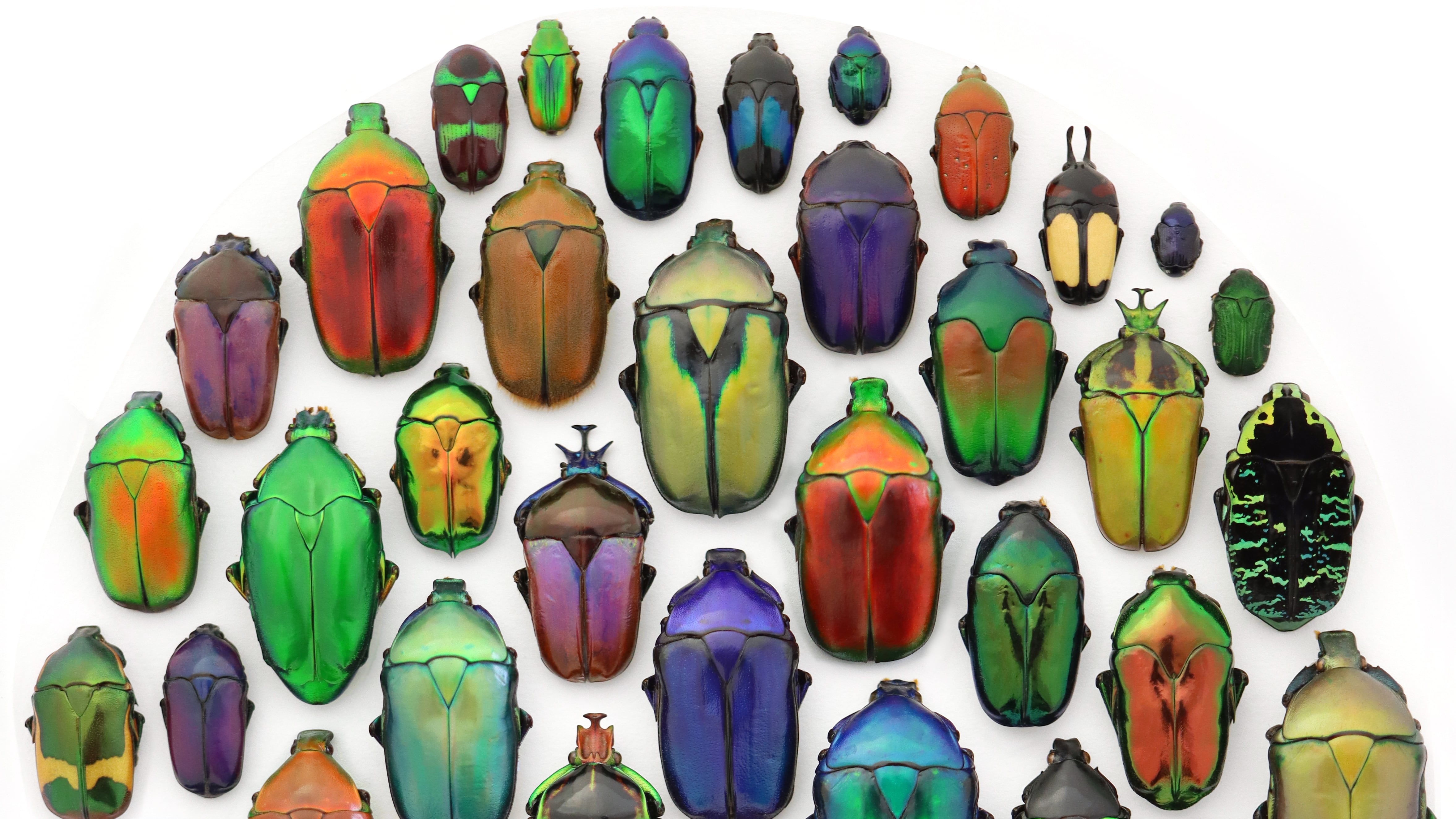A bright wall of glittery beetles, their preserved shells a kaleidoscope of greens, blues and reds, greets visitors at the Oregon Museum of Science and Industry. Exquisite Creatures Revealed—an exhibition of more than 10,000 insects, sea creatures, birds, flowers and snakes collected by naturalist and artist Christopher Marley over more than 20 years—is on view at OMSI through Feb. 17.
Where taxidermy is the mounting of stuffed remains, Marley’s specimens are preserved with chemicals and freeze-drying methods, leaving their bodies fully intact. He then arranges specimens aesthetically, so Exquisite Creatures Revealed helps viewers both appreciate the natural world’s beauty and dispel preconceived notions about oft-maligned critters, particularly snakes, spiders and insects. Marley works with zoos, museums, breeders, biologists, importers and a few conservationist organizations to reclaim deceased creatures. Nobody has to die for art on Marley’s watch, but rather his craft continues his peers’ work in death.
Marley worked as a commercial artist before he started building his collection. He worked in the fashion industry for 15 years, traveling the world for labels that included Louis Vuitton, Nike and Gucci. During this time, he enjoyed taking in natural wildlife while hiking and exploring his temporary new homes. He tells WW he hopes Exquisite Creatures Revealed renews Oregonians’ love affair with the natural world and fosters a closer, more expansive connection to biodiversity. “We are so busy and so distracted that the quiet voice within us often can’t get a word in edgewise,” he says. “My hope for the exhibit is that people will have those revelatory experiences.”
While the natural inclination for many people is to stay away from critters with six, eight or no legs, OMSI’s displays reveal a creature’s structural details in a way that destigmatizes the features that most commonly scare people. Only one of Marley’s snakes is poisonous, but many in his global collection share similar colors. For anyone with a fear of snakes, viewing them up close could be much like exposure therapy. Marley was once scared of insects, but he overcame his fears by getting near them in a less threatening environment.
“The real joy and triumph of the work is to get things to look like they are alive so you’re having as close an experience as you can without fear of reprisal,” Marley says. “You can get 2 inches away from a 13-foot king cobra in the exhibit and not have to worry about it.”
One of the first things viewers should look for to immediately appreciate the show’s message are sea urchins. Sea urchin shells, or tests, as they’re known, are made of sections that fit together like an orange, creating a circular-repeating pattern with dots or stripes and raised parts. These come in an array of colors, including purple, light green, orange and red. Marley dares the viewer to accept the intricacies of small organisms as beauty and design.
After collecting more than 300 turtles over a decade, Marley thought about what message he wanted their bodies to convey. “Sometimes there’s a theme or story that I want to tell and sometimes I look at the organism and see what it is saying,” Marley says.
Many animals are often on the move, allowing just a quick glimpse when they are outdoors. The glass case gives the viewer a chance to see their intricate details while they stand still. Butterflies in a mosaic reveal patterns and nuances unseen when they are in flight. The same goes for preserved fish, arranged to recall snorkeling in the ocean. Shining a spotlight on dots, rainbows and other geometric patterns in the flora and fauna kingdoms engenders a newfound sense of appreciation for how color is used as both camouflage from predators and attraction for mates. Tropical birds are shown with their full wingspan to capture the dazzling effect of their vivid colors, enhanced by OMSI’s whitebox display settings.
These creations build familiarity with nature. Marley brings to light the connection between humans and animals, which is crucial to preserving wildlife. Creatures of land, sea and air are hard to look away from, but flowers and rare carnivorous plants are just as naturally inviting. He lauded OMSI for the museum’s embrace of his artwork.
“OMSI is the best museum I have worked with, as far as working with the staff, them sharing the vision and letting me be creative,” Marley says. “Their staff and their vision is perfectly in line with mine. I am really impressed with their organization and how they handle temporary exhibits like mine.”
SEE IT: Exquisite Creatures Revealed at OMSI, 1945 SE Water Ave., 503-797-4000, omsi.edu. 9:30 am–5:30 pm Tuesday–Sunday, through Feb. 17. $15–$23, OMSI members and children under 3 free.
